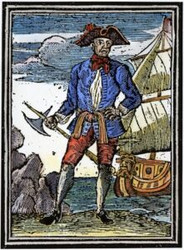Scottish & Irish Pirates
Posted by Charles MacGregor on Apr 14th 2019
Originally Published June 2012. Written for The Celtic Croft by Charles MacGregor of MacGregor Historic Games.
Scottish & Irish Pirates
Although when thinking about pirates most people think of Johnny Depp, tricorn hats and Captain Hook, pirates probably appeared on the scene shortly after people started transporting valued goods via boat. I thought it might be fun to take a look at some of the colorful figures who came from Ireland and Scotland.
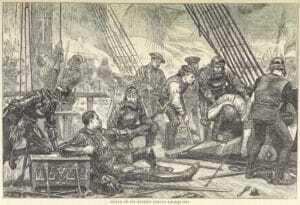
Sir Andrew Barton (c. 1466 - 1511)
Barton was the inspiration for his own ballad (Child #167). He was notorious in England and Portugal as a pirate. but legally his status was a privateer since was serving under a letter of marque from the Scottish crown that had originally been issued to his father. He even served as the High Admiral of Scotland. His ship was captured by the English in 1511 while looking for Portuguese ships as prizes. Sir Andrew was illegally beheaded by his English captors in spite of the fact he was in possession of a letter of marque.
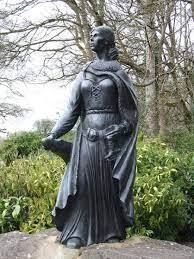
Granny O'Malley as she is sometimes known, is one of the early female pirates and was the Queen of Umail (in the west of what is now County Mayo, Ireland), chieftain of the O Måille clan. Legend has it that as a girl she wanted to sail to Spain with her father, but was told she could not because her hair would get caught in the ropes. To spite her father she cut her hair short and gained the nickname "Gråinne Mhaol" (from maol meaning bald or cropped hair. Anglicized as Granuaile.) She is believed to have been formally educated and learned the business of shipping and international trade from her father. After the death of her father she made her base on Clare Island in Clew Bay. Eventually, Galway's city leaders complained to England that her ships acting as pirates. Galway had begun imposing tolls on ships traveling through their waters, so O'Malley had begun to do the same for ships passing her lands by boarding traders and demanding cash or goods in return for safe passage. She eventually went on to support Irish rebels fighting English control and even met with Elizabeth I to negotiate the release of her sons and half-brother.
Dalzeel was born in Port Patrick, Scotland, and having gone to sea as a child, obtained a captaincy at the age of 23. However, he had earned a reputation for being dishonest and joined the pirate fleet of the famous Captain Avery in 1685 and is Dazeel is said to have participated in Avery's capture of a rich Mogul treasure ship the Ganj-i-Sawai. He was given his own ship and crew in Avery's fleet, but eventually they left on their own to ply the waters of the West Indies. Although the pickings were few, they eventually came upon a Spanish war galleon. In spite of being out-gunned Dazeel ordered his crew to close on the Spaniard and the story goes that he had his own ship holed so that his crew would be forced to fight to win or drown with their sinking ship. They caught the Spaniard off guard and took the galleon for their own. In spite of being captured twice by the Spanish he escaped was eventually gained a commission as a privateer from the French, and was captured by the British and for some reason was pardoned, but was later hung in London after being captured yet again.
Little is truly know about John Gow's life, beyond an unreliable account written by Daniel Defoe, but he was immortalized by the 1724 book A General History of the Robberies and Murders of the most Notorious Pyrates. Born in Wick, Caithness to a merchant, he crewed on a ship traveling between London and Lisbon and made a failed attempt at a mutiny. He was forced to flee to Amsterdam and signed on as a second mate on a ship bound for Santa Cruz. Morale on the new ship was poor with complaints about the food and the treatment of the crew by the captain.
In November 1724 the captain ordered Gow to make preparations to fight off the crew, not realizing that Gow was at the lead of the potential mutineers. The captain was tricked to come to the rail,

stabbed and thrown overboard. After a successful few weeks as a pirate in the waters off of Spain he returned to the Orkney Islands trying to pass himself off as a wealthy trader (and a renamed ship), even courting a young lady until he was recognized and hung with his crew less than a year after turning pirate. Gow was said to have been slow to die when he hanged. To speed his end, some of his friends pulled at his legs, but this just broke the rope, causing him to tumble to the ground, from where he was gathered up and hanged again.
William "Captain" Kidd (c. 1645 – 1701)
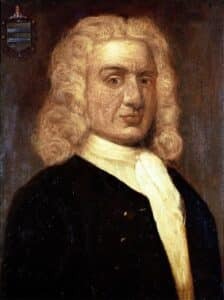
Kidd, is of course, one of the most famous names in piracy, of course it doesn't hurt his legend that he is rumored to have left a treasure buried on some forgotten coast. But his trial and execution were of as much interest to some people as his career. One of Kidd's investors Bellemont learned he was potentially subject to prosecution as well for his support of Kidd, and for his own protection arranged to betray Kidd to the authorities. After a year in prison in Massachusetts he was finally sent to London. The Tories who were in power at the time hoped that they could use Kidd's testimony to expose the Whigs who were his backers when he became a privateer. He refused to name them, probably hoping his patrons would exert some influence to have him released in he remained silent. But his backers also betrayed him by withholding money and information that might have helped in his defense. On the other hand, the Tories might have let him live if he had named names. In the end, he was found guilty of one count murder and five counts of piracy. He was hung (twice actually, the rope broke on the first attempt) and his body was left to hang in an iron cage over the Thames River as a warning to other pirates. His ship the Quedagh Merchant (also know as the Cara Merchant and the Adventure Prize) was discovered off of Catalina Island, Dominican Republic just in 2007 in a mere ten feet of water and 70 feet from shore.
Walter Kennedy (c 1695 - 1721)
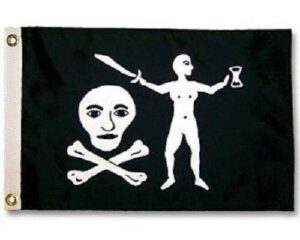
The sloop-of-war he was serving on was dispatched to the Bahamas in order to suppress piracy in the local waters, but several of the crew turned out to be pardoned former pirates who, along with Kennedy mutinied before they reached port in Havana. While his captain left in a captured sloop to go after another prize, Kennedy took the opportunity to declare himself captain and left with hist captain's ship. In what sounds like a possible comedy it turns out Kennedy was not much of a navigator, for while trying to sail back to Ireland they went off course and ended on the coast of Scotland where seventeen of his crew were captured and hung. Kennedy himself was able to make it to brothel he is said to have kept in London. One of his "girls" eventually accused him of theft and he was recognized as a pirate and hung at Execution Dock.
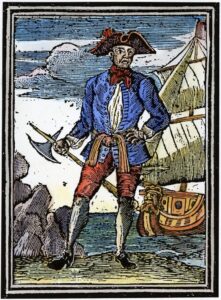
Edward England, born Edward Seegar (c.1685–1720)
Anne Bonny (1702 – 1782)
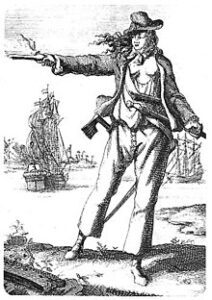
Bonny is famous as one of the few female pirates. She was from Kinsale, Ireland but little is known about her life prior to he family moving to the Bahamas. She married a sailor/pirate by the name of James Bonny who hoped they might inherit her father's estate, but she was disowned by her father. The couple moved to Nassau where James became an informant reporting information on local pirates to the government. Anne eventually became the mistress of the pirate "Calico Jack" Rackham and she eventually divorced Bonny and married Rackham and lived with him the pirate life and along with Mary Read they recruited a crew. Although it is claimed Anne disguised herself as a man aboard their ship, there seems to be no clear evidence for this. She fought competently alongside the men and was listed among the "wanted pirates" in the Caribbean, but never commanded a ship herself. Both Mary Read and Anne Bonny were eventually captured and "pleaded their bellies" (Claimed to be pregnant) to avoid execution. Read eventually died in prison, but there is no record of Anne Bonny's release or execution. One of the rumors is that her father used his business connections to secure her release, and there does seem to be evidence he had helped her more than once after being captured previously. The Oxford Dictionary of National Biography claims that evidence provided by her descendants suggests that her father managed to secure her release from jail and bring her back to Charles Town, South Carolina, where she gave birth to Rackham's second child. On December 21, 1721 she married a local man, Joseph Burleigh, and they had 10 children. She died in South Carolina, a respectable woman, at the age of eighty on April 22, 1782. She was buried on April 24, 1782. According to Sherman Carmichael's Forgotten Tales of South Carolina, she is buried in the York County Churchyard in York County, Virginia.

